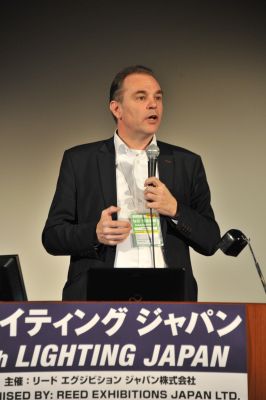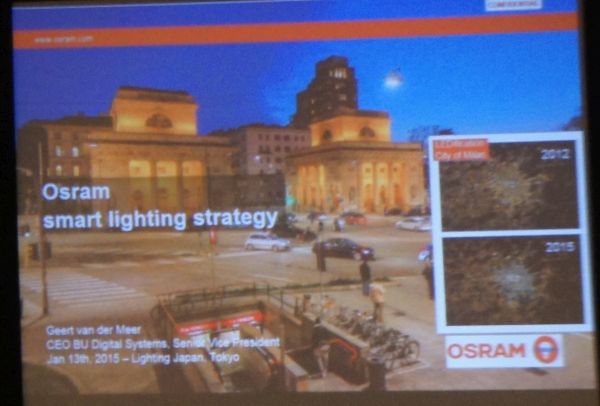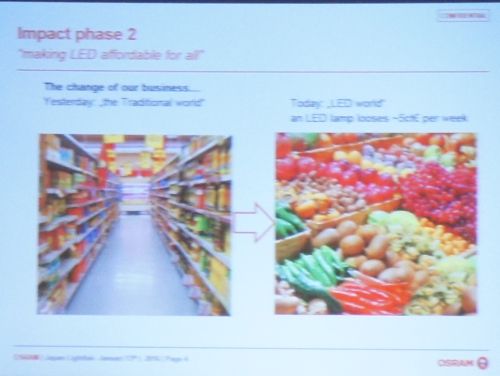Current LED chip and lamp prices have plummeted because there are too many similar competitors on the market, said Geet van der Meer, Head of Osram's LED Lamps and Systems business unit recently at a Lighting Japan 2016 forum. To cope with the challenging environment, companies are focusing on product quality, design, digitalization and intelligent devices to pave an alternative road map for LED lighting.

|
|
Geet van der Meer, Head of Osram's LED Lamps and Systems Business Unit. (Osram/LEDinside) |
Starting in 2011, the industry has been releasing improved LED solutions to meet market demands and challenges. Many in the industry have started to invest in this market, which is rapidly transforming into a commercial market. LED product life cycle has been shortened to less than two years, whereas traditional luminaire life cycles averaged eight years. Changes in the design and related structures have also led to rapid transformation. To maintain operations and profitability the lighting industry will be required to create new values.
 |
|
A slide in Osram’s presentation. (LEDinside) |
The digitalization of lighting is also a new alternative, technologies that combine cloud, automated control, analyses and mobile computing are also a crucial innovation.
Current market trends are placing emphasis on the smart lighting market to lower carbon emissions, improve safety, save energy and create an even better work and living environment. Ambient lighting and other human centric lighting factors will become even more important following these changes.
To integrate lighting designs into smart buildings, a more comprehensive ecosystem is required to provide more user friendly interface products that is combined with wireless technology that can be paired with various IoT applications.
 |
|
Osram’s smart lighting products applied in supermarkets. (LEDinside) |
Osram’s products are moving towards commercialized solutions and designs, and products added value is achieved through client software. The German company is collaborating with OEMs and lighting designers to directly acquire the needed resources to make the luminaire design more comprehensive, and raise the rate the products is released on the market and its quality. This is very different from the large order markets.
Osram invested many resources in its Lighting Management System (LMS), which already has a certain degree of visibility in the commercial lighting market. The dimming design was simplified, and can meet commercial market’s lighting application demands. In the future, the lights will be designed to become smarter and be integrated with large installation projects, such as area data analyses and power consumption reports. For Osram, the relationship between environment and light will become its new focus in the future.
(Author: Ivan Lin, Director of Content Development Center, TrendForcehttp://Translator: Judy Lin, Chief Editor, LEDinside)











